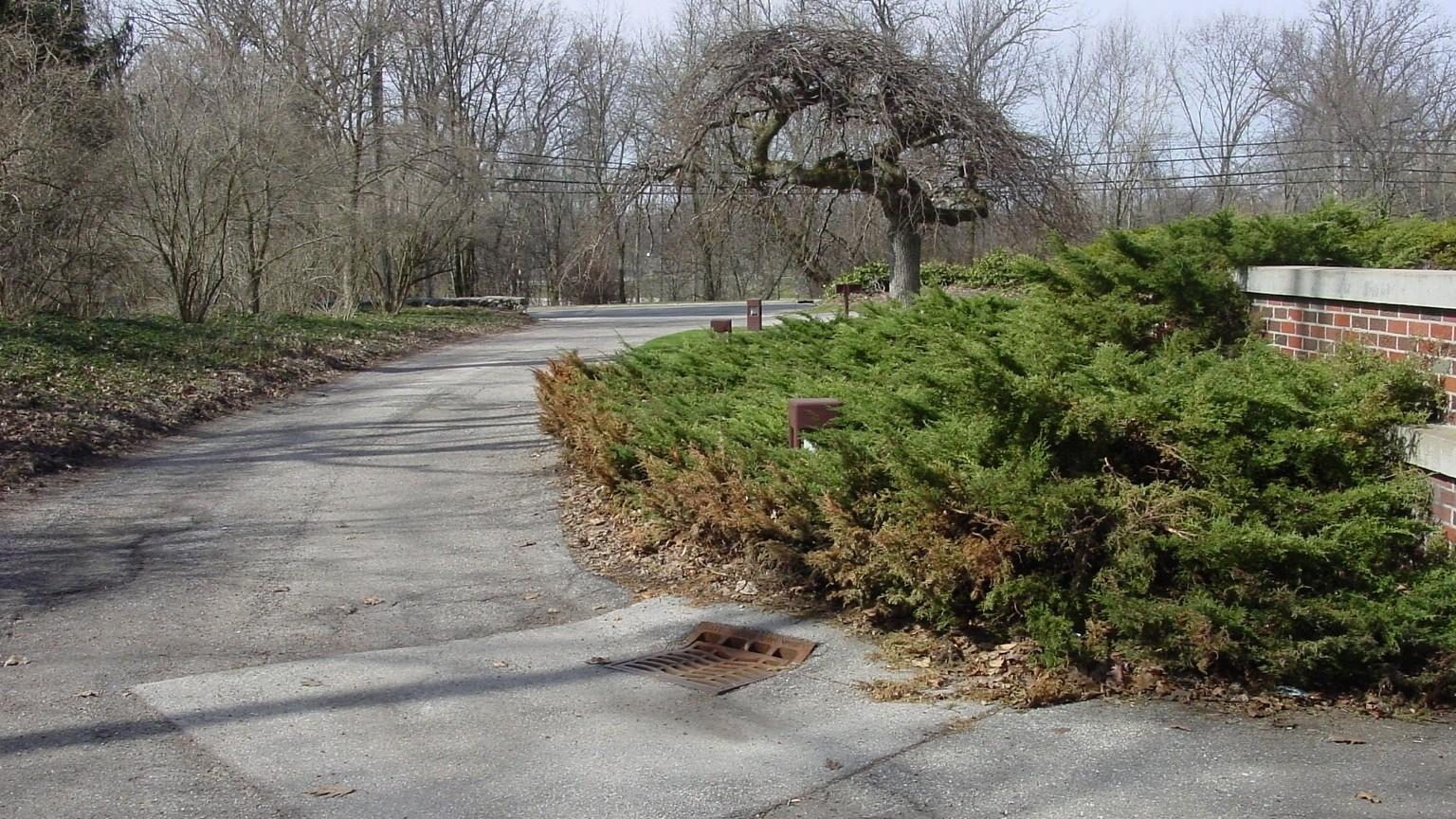Key points
- Trees and shrubs planted along roadways and sidewalks can be injured by deicing salts and road spray.
- Over application of water soluble fertilizers which contain salts can burn or injure plants.
- Salts draw water out of roots, leaves, and needles, killing cells and injuring plants
Symptoms of salt damage
- Damage due to excessive fertilizer or rock salt applications generally appears as marginal leaf browning (brown edges or leaf tips) or leaf scorch on deciduous plants (they drop their leaves at the end of the season).
- On evergreen trees and shrubs needle tips will turn brown and become brittle.
- Premature fall needle coloration may also be a symptom of salt injury on evergreens.
- Repeated exposure can cause deformed growth and eventual bud, twig, and branch dieback.
Deicing salts
- Careless use of deicing products can damage both plants and the environment.
- Fertilizer may not be used to deice walkways and driveways according to Maryland's Lawn Fertilizer Law. Runoff carrying nutrients enters storm sewers eventually emptying into the Chesapeake Bay. You can reduce pollution of local streams and the Bay by selecting the proper materials and methods for removing ice and snow.
- Ice melting products are most effective when spread thinly and evenly over the pavement before ice formation. It is much easier to prevent ice than to try to melt a thick of ice.
- Follow the manufacturer’s directions when applying a deicer. If possible, use less than is recommended, but make sure the surface is covered thinly and evenly.
- To melt thick ice in very cold weather, add a small amount of water to the deicer to help initiate melting. To further aid melting and provide sure footing, mix deicer with wet sand and/or ashes.
- Use sand, ashes, or kitty litter to improve traction on icy areas.
Fertilizer
- Fertilizing woody ornamentals is only warranted when soil testing indicates a need for additional nutrients or you observe pale green leaves and very limited new growth in the spring.
- In most landscapes, healthy, mature trees, and shrubs do not require regular applications of fertilizers. Roots pick up nutrients from soil minerals and organic matter. Woody plants also receive nutrients from lawn fertilization if their roots are adjacent to or growing under the lawn area.
- Newly planted trees do not require fertilization for one to three years after planting. Most of the plant's energy is directed towards root growth during the establishment period and nitrogen applications seem to suppress root growth after planting.
- Fertilizer is not a remedy for landscape problems except if there is a nutrient deficiency. Fertilizing a declining or injured tree or shrub will not return it to good health unless a soil test indicates nutrient deficiencies.
- Follow the label directions on the fertilizer product you are using if you decide to fertilize. Resist the urge to apply more than is recommended on the label.
Management
- Soaking the soil in the affected area with one-inch applications of water three to four times in the spring can often improve plant damage.
- Gypsum may be added to the soil to reduce high sodium levels caused by excessive amounts of rock salt. Soil replacement may be an option for small planting beds.
- Have your soil analyzed by a soil-testing laboratory for soluble salts if you suspect salt damage.
